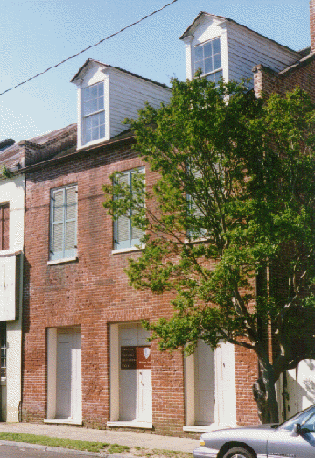Bibliography
- Hogan, William Ransoma and Davis, Edwin Adams, Editors; William Johnson's
Natchez; Louisiana State University Press, Baton Route and London,
1951, 1979, Paperback, 1993.
WILLIAM
JOHNSON -
William
Johnson was born a slave in 1809, in Natchez, Adams Co., MS. His mother
was Amy, the slave of white William Johnson, who, in 1814, publicly posted
his intent to free "his female slave Amy". The notice was publicly posted
for 30 days, and on March 20, 1814, Amy gained her freedom. However, due
to his young age, Amy's son, William, could not be released at that time,
and so remained a slave.
Upon
release from slavery, Amy adopted her former master's last name, and established
a household in Natchez.
Four
years later, in 1818, Amy's daughter, "a mulatto girl named Delia/Adelia
aged about thirteen years" was granted her freedom. But it was not until
February 20, 1820 that Amy's son, William, was liberated.
In
1820, Delia/Adelia Johnson married a twenty-year-old Philadelphia-born
free Negro named James Miller, a barber who maintained a business in Natchez.
Young William Johnson became an apprentice in the barber shop, and for
several years operated his own business in Port Gibson, MS, north of Natchez.
In 1830, Johnson purchased the Natchez business from his brother-in-law,
James Miller, who moved his family to New Orleans. The purchase price was
$300, and included such items as a dozen razors, a razor strap, and two
bottles of "bear's oil."
Johnson,
at age 26, married a young 20-year-old free mulatto girl named Ann Battles,
in 1835. Up until that time, Johnson had maintained careful and detailed
financial records of his business and personal life. Those records indicate
that he was a man about town, frequently participating in gambling events,
and attending theatrical performances with free women of color. His notes
indicate that Ann was about 5 foot 7 inches in height. Johnson was slightly
shorter that his wife, and his weight averaged around 135 or 140 pounds.

Last
structure built by Johnson is currently undergoing renovation. Located
at 210 State Street, Natchez, the building was constructed between August,
1840, and November, 1841. It replaced a frame house that had been destroyed
by fire in September, 1839. This structure was the family home for more
than 100 years. Photograph copyright Dale Woosley, Natchez, MS - 1997
William
Johnson and his wife raised a large family of ten children. The tenth child
arrived only one month prior to Johnson's death.
In
1835, Johnson's carefully maintained records evolved into a personal diary,
in which he made note of everyday events that occurred in Natchez, in addition
to his personal and business expenditures and trips. In his diary, Johnson
recorded bits and pieces of news and events on a daily basis. Through these
notations, historians are able to see an extraordinary and intimate picture
of Natchez, Mississippi, and the daily life of it's citizenry during that
time. Hundreds of notations were made regarding Natchez citizens and events.
William
Johnson maintained his diary until his death in 1851. Shot by an adversary,
white Baylor Winn, Johnson died eight hours later. The diary remained a
secret until 1935. It was first published in 1951, upon the 100th anniversary
of Johnson's death.
|



